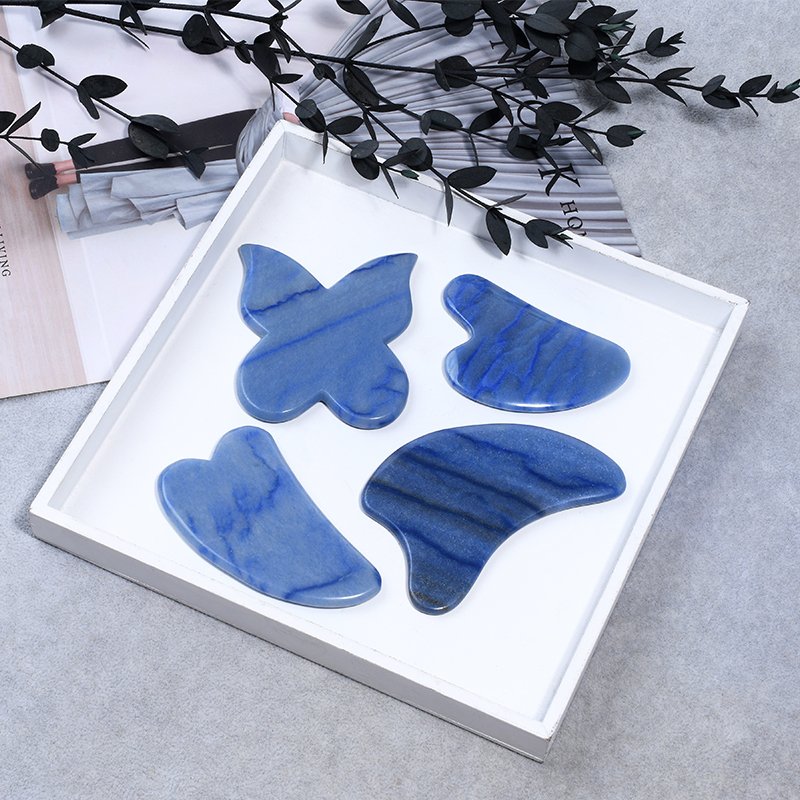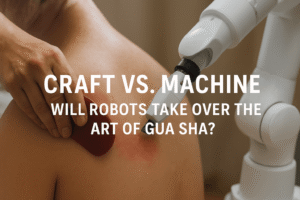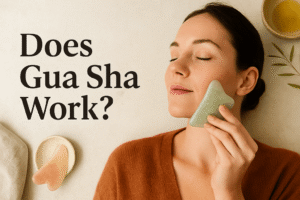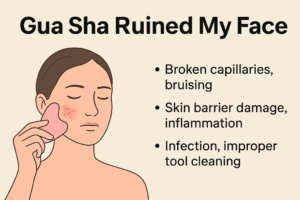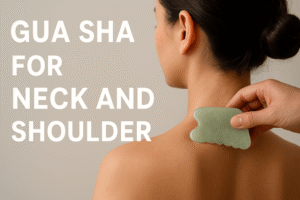
Do gua sha actually work? Can Gua Sha really sculpt, smooth and enhance your natural features? In short, the answer is complicated.
Gua sha facials seem to be a new trend as they take over TikTok (along with dermaplaning) in North America and Europe, but the treatment has been around for a long time – say many practitioners of traditional East Asian medicine since time immemorial.
While your dermatologist may not be prescribing gua sha stone therapy anytime soon, this traditional skin care practice may have some positive effects that are not fully understood by modern Western medicine.
What is Gua Sha?

Gua Sha is a facial massage technique that involves gently scraping the surface of the skin with a smooth-edged tool or stone, such as jade or rose quartz. Gua sha is not a new health trend – it has a long history in traditional Chinese medicine, with its first recorded use in AD 1337. ² Skin scraping is also used as a medical technique in cultures outside of China (eg ancient Greece). Scraping may sound painful, but it really just refers to the brush strokes you make with the tool, and it means relaxation. The benefits of gua sha are believed to range from lightening fine lines to sculpting the face.
Gua sha facial has only recently become popular in the West, mainly due to people sharing their benefits of scraping on many explosive social media, such as Tiktok, Youtube, etc.
What Tools can be Used for Gua Sha?
Gua sha is traditionally done with horn, jade or rose quartz tools, the key is whether it can successfully complete the gua sha work on your face. The exact type of materials and tools is up to your personal preference, no matter how your skin feels. Choose something that is smooth and free of debris or sharp edges that could irritate or cut your skin, and keep it clean.
What are the Benefits of Gua Sha?
We think Gua Sha is a great way to relax and relieve stress, but we’re skeptical of the hype and lack of scientific research to back it up as it relates to skin care. There is currently no medical evidence that gua sha has benefits for the skin (such as improving fine lines), but some studies point to potential benefits of the gua sha massage technique—not just for the face, but for the entire body. Here’s what we know:
face sculpting
Those who enjoy Gua Sha facials say they help reduce puffiness and inflammation while providing cosmetic benefits (again, there’s no scientific evidence to back this up). That said, if you’ve tried everything to get rid of puffiness under your eyes, it doesn’t hurt to try scraping to see if it works for you. In the opinion of experts, Gua Sha is probably not an effective facial sculpting technique, it can only improve your facial condition when there are problems with your face, but it does not cause miraculous changes to your original face.
Of course, one of the best ways to deal with puffy eye bags is to make lifestyle changes. First: limit salt intake, get more sleep, manage allergies.
muscle tension
For many people, doing gua sha feels good—a real benefit, even if it’s hard to quantify. Most people feel fine after any type of massage, even without a doctor’s prescription. A study found that scraping therapy can promote muscle recovery in those who lift weights regularly. Although not fully proven, some studies suggest that head massage helps with migraines, so the post-gua sha glow may come from deep relaxation of the facial muscles.
blood flow
Similar to other massage techniques, Gua Sha helps improve blood circulation and relieve muscle soreness.
relief the pain
One of the more intriguing studies found a correlation between gua sha back massage and pain relief—but why is unclear. According to the study, “there is an unknown biological mechanism of pain relief associated with scraping.”⁶
We look forward to future credible research. But until then, if you have back pain, feel free to book a Gua Sha massage – it won’t hurt.
